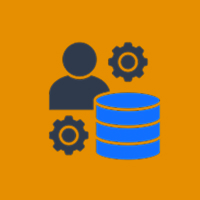The last couple of years have seen machine learning as the new game-changer in tech circles. As a branch of AI, ML gives computers the wherewithal to learn from data and improve their performance over time without explicit programming. Whether you run a business and are looking to capitalize on data for better decision-making or just interested in this fast-emerging field, knowing the key concepts and real-world applications of machine learning is essential. In this post, we will look into what ML is, the main concepts behind it, and how it’s changing industries.
What is Machine Learning (ML )?
Machine learning mainly teaches the computer to identify patterns and make inferences from data. Unlike traditional programming, where the machine performs pre-set procedures, ML algorithms learn from the input data they process. That is, they can adapt to predict outcomes or classify information independently and even make content.
Important Concepts of ML
1. Supervised Learning
The most common type of machine learning is supervised learning. This type of learning involves using labeled data to train algorithms. Such training involves pairing input data with the correct output. It then uses a separate dataset as a validation test to evaluate accuracy. Its typical applications include spam detection in emails and house price predictions.
2. Unsupervised Learning
Unlike supervised learning, unsupervised learning works on data that are not labeled. It seeks to determine the hidden patterns or groupings of data. Common applications include tasks such as clustering based on a customer’s buying behavior or simply to reduce the complexity of the data involved, for example in making large data sets less cumbersome without losing crucial information.
3. Reinforcement Learning
Reinforcement Learning: In this method, an algorithm learns by making decisions through trial and error. Then it receives feedback in form of rewards/penalties with respect to each action taken so that it strategizes for most positive outcomes it can achieve, which is used frequently in robotics and gaming, plus self-driving cars as well.
4. Neural Network
A neural network is layers of interconnected nodes or neurons inspired by the structure of the human brain. It performs best in deep learning, which is a subset of machine learning. The main application areas include image recognition, speech processing, and natural language generation.
Applications in Real Life
1. Health Care
Machine learning is transforming healthcare into predictive analytics for enhancing patient care. Algorithms can scan through medical data to identify risk factors about diseases; enhance the certainty and accuracy of diagnoses; and even help discover new treatments.
2. Finance
In finance, ML algorithms detect fraud, analyze financial trends, and automate trading processes. Banks and financial institutions use these systems to analyze transaction data in real time; suspicious activities are flagged and overall security improved.
3. Marketing and Sales
Machine learning helps organizations personalize their marketing campaigns by anticipating what the customer may do in the future with data from the customers. Thus, companies can provide tailored recommendations, enhance ad campaigns, and interact with the customers.
4. Transportation
ML informs the transportation industry by optimizing delivery routes and creating self-driving vehicles. Uber and Lyft apply ML algorithms toward the highest efficiency in matching riders with drivers, while firms that operate logistics can estimate when vehicles will need maintenance.
5. Entertainment
One can understand through machine learning how a user will select content through the platforms of Netflix and Spotify. This increases the user experience, with assurance of retention in cases where they subscribe to other services.
Benefits of ML
1. Improved Decision Making
Machine learning scans through huge amounts of data very fast and brings out trends and patterns that can be used to make business decisions. For example, predictability of the direction that stocks will take in finance saves the investors better choices.
2. Effectiveness
Machine learning brings automation of routine tasks, thereby increasing the ability to free employees for more intensive work, hence improving efficiency and quality on actions serving customers.
3. Personalization
Machine learning propels personalization of experience cutting across sectors. For this reason, e-commerce websites suggest products according to their tastes. Moreover, personal playlist hosts favorite music content of customers on applications.
4. Predictive Analytics
Predictive analytics enables a business to predict trends and behaviors. The retailers apply machine learning in predicting customer demand and thus optimize their inventory; the healthcare providers apply it in predicting patient outcomes in order to perform early interventions.
5. Enhanced Security
Machine learning also provides better security. Here, it is easier to detect anomaly and hence prevents fraud. Credit card companies can use ML for identifying fraudulent transactions, while cyber security firms do the same real-time to track potential threats.
6. Continuous Learning
Always, machine learning systems are learning. This means they get better each day since, at all points, they process newly discovered data. As an example, streaming platforms constantly learn how best to improve the recommendation systems when users interact through the platforms while on the move.
7. Scalability
Scaling with businesses, machine learning can process a greater amount of data without increasing the costs disproportionately. This scalability is something through which companies will be able to meet changes in market demand better and stay ahead of the game.
Conclusion
Machine learning is not a word of technology or a buzzword. It is revolutionizing, actual consequences in nearly every sector. The basics include supervised learning, unsupervised learning, reinforcement learning, and neural networks, through which apps are developed to be applied to health, finance, marketing, etc. It’s now time for both businesses and the individual to utilize it to their advantages in driving innovation and succeeding.
With this progress of ML, you will be equipped with more knowledge to take better decisions and unlock new business and life opportunities.













 Database Development
Database Development












































